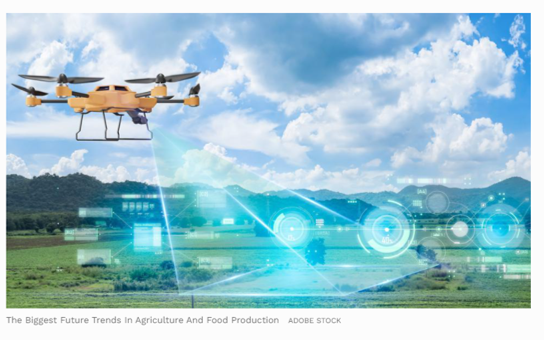K
Kathleen Martin
Guest
To feed the growing global population, estimates suggest we’ll have to increase food production by as much as 68 percent by 2050. And that’s not the only challenge; there’s also the fact that the middle-class population is growing, which generally brings with it increased demand for meat over grains, legumes, and wheat. Satisfying this demand for more food – and, most likely, more meat – presents a huge challenge for our already struggling planet, especially when you consider that the food system accounts for 26 percent of total global greenhouse gas emissions. (Agriculture, forestry, and land use make up 18.4 percent of this, while the rest is down to things like packaging, refrigeration, and transport.)
The obvious, and arguably the simplest, solution is for us all to adopt a plant-based diet. (Research shows that excluding meat and dairy is the single most impactful way for people to reduce their environmental impact.) But, if we’re honest, getting billions of people to switch overnight to a fully vegan diet is, at best, unlikely. After all, meat is deeply ingrained in many cultures, as is dairy.
With all this in mind, it’s clear that we need urgent new innovations in agriculture and food production. In this article, I outline the two broad trends that I believe will revolutionize our food system.
Trend 1: Reimagining farming methods
Embracing new farming methods could help the agriculture industry reduce its environmental impact while still increasing productivity. While previous evolutions in farming have largely been driven by mechanical improvements (namely, bigger, better machinery) or genetic advances (better seed, more effective fertilizers, etc.), the next big transformation is being driven by digital tools. For example, we have:
Automation – including the use of robots, drones, and autonomous tractors to make farming more efficient.
· Precision farming – which involves applying irrigation, fertilizers, and pesticides at variable rates, depending on the needs of crops, rather than uniformly applying them at set times, quantities, and frequencies.
A good example of precision farming comes from a collaboration between Israeli company Phytech and Swiss agrichemical company Syngenta. Together, they have developed a monitoring system that includes plant growth sensors and soil moisture sensors to help farmers continually monitor crop growth and soil health and take action when and where it’s needed.
Other key trends to watch in farming methods include:
The obvious, and arguably the simplest, solution is for us all to adopt a plant-based diet. (Research shows that excluding meat and dairy is the single most impactful way for people to reduce their environmental impact.) But, if we’re honest, getting billions of people to switch overnight to a fully vegan diet is, at best, unlikely. After all, meat is deeply ingrained in many cultures, as is dairy.
With all this in mind, it’s clear that we need urgent new innovations in agriculture and food production. In this article, I outline the two broad trends that I believe will revolutionize our food system.
Trend 1: Reimagining farming methods
Embracing new farming methods could help the agriculture industry reduce its environmental impact while still increasing productivity. While previous evolutions in farming have largely been driven by mechanical improvements (namely, bigger, better machinery) or genetic advances (better seed, more effective fertilizers, etc.), the next big transformation is being driven by digital tools. For example, we have:
Automation – including the use of robots, drones, and autonomous tractors to make farming more efficient.
· Precision farming – which involves applying irrigation, fertilizers, and pesticides at variable rates, depending on the needs of crops, rather than uniformly applying them at set times, quantities, and frequencies.
A good example of precision farming comes from a collaboration between Israeli company Phytech and Swiss agrichemical company Syngenta. Together, they have developed a monitoring system that includes plant growth sensors and soil moisture sensors to help farmers continually monitor crop growth and soil health and take action when and where it’s needed.
Other key trends to watch in farming methods include:
- More localized, urban farming – i.e., producing food closer to the people who need it, thereby reducing food miles.
- Vertical farming (the practice of growing crops in vertical layers) and hydroponics (growing plants in nutrient-rich water) – are both methods that generally use less water, soil, and space than traditional field farming methods. If this sounds niche, think again; the world’s largest vertical farm, located in Newark, New Jersey, shows that vertical farming can be done on a huge scale and with impressive results. Creators AeroFarm say the vertical farm is 390 times more productive per square foot than a field farm.

